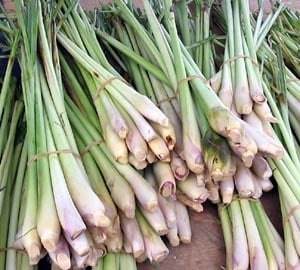
Learning Download: How to Grow Lemongrass
From Seed to Harvest: A beginner’s guide to growing lemongrass
Lemongrass originates from southern India and is an aromatic plant with a citrusy scent. It is often used in recipes to add a fresh lemon taste to meals. It also can be used to make essential oils, a lemongrass has medicinal uses as well by being an anti-inflammatory. lemongrass is a perennial herb, which means it will come back year after year. It grows in grassy clumps that can reach up to 5 feet tall.
To plant:
Plant lemongrass seeds 1/4 inch deep and 1 inch apart and begin them inside up to three weeks befor`e the last frost date. If planting inside, plant the lemongrass in seedling trays that can be covered so the seeds have a warm, moist environment to germinate. Once the seedlings appear, remove the plastic covering and transplant them outdoors to a location in full sun.
To grow:
Lemongrass grows best in the summer and does well in heat, as it is a tropical plant. It grows best in a container and prefers full sun. Lemongrass does well in containers, so when you transplant seedlings place the seedlings in a 5-gallon container or larger. Place the pots in an area protected from the wind. Since lemongrass grows so tall, it can be easy to tip over if growing in a pot or a container. Throughout lemongrass’s growing period, keep its soil moist by watering two to three times a week.
Sometimes, lemongrass can suffer from leaf blight, which is when the lemongrass leaves turn brown and begin to wilt. Remove the infected leaves and spray the plant with copper sulfate, which is a fungicide that is safe for edible plants.
To harvest:
Lemongrass is ready to harvest when the stalks are at least 1/2 inch thick, dark green and at least 18 inches tall. Harvest lemongrass by snipping the entire stalk at its base. When harvesting lemongrass, be sure to wear gloves as the stalks can irritate the skin. At the end of its growing season, cut lemongrass plants back to only 6 inches tall and reduce watering and discontinue fertilizing. Water only to keep the soil moist and move the plant to a bright place protected from frost. Once spring growth appears in the plant after winter, resume the watering and fertilizer schedule.
What lemongrass craves:
Feed lemongrass with a high-nitrogen fertilizer when you transplant it outdoors, such as alfalfa meal or blood meal. To fertilize, mix 1/2 cup of the fertilizer into the soil before transplanting the lemongrass seedlings. After transplanting, fertilize lemongrass every couple of weeks during its growing season with a liquid plant food or fish emulsion.
Where to buy lemongrass seeds:
You can find lemongrass seeds at Urban Farmer.

